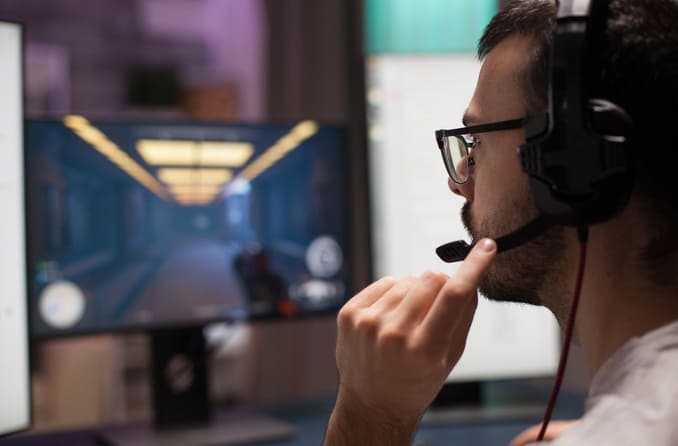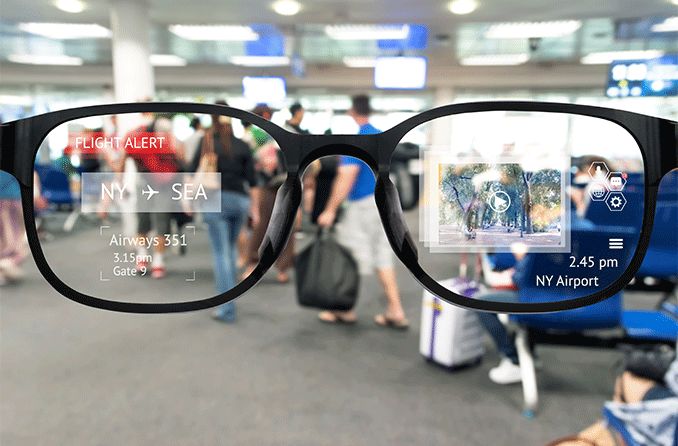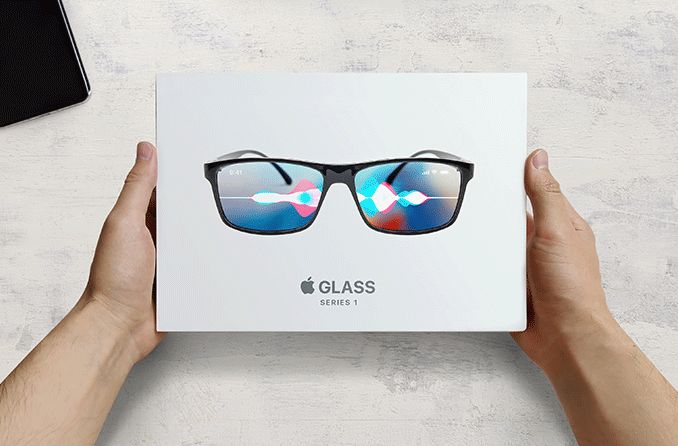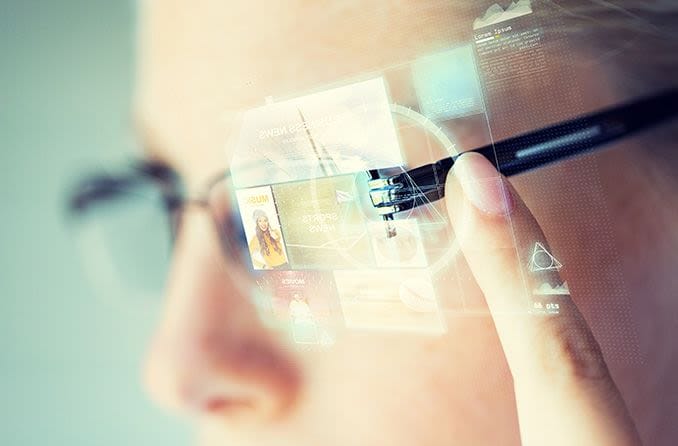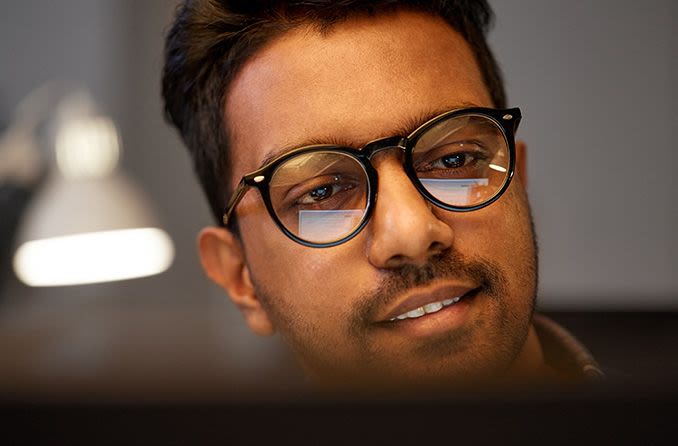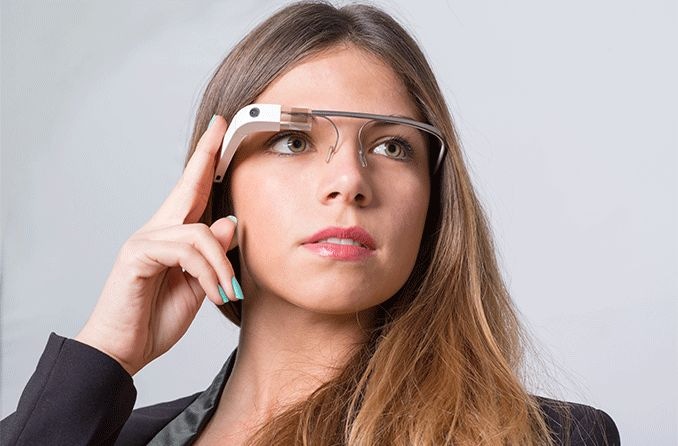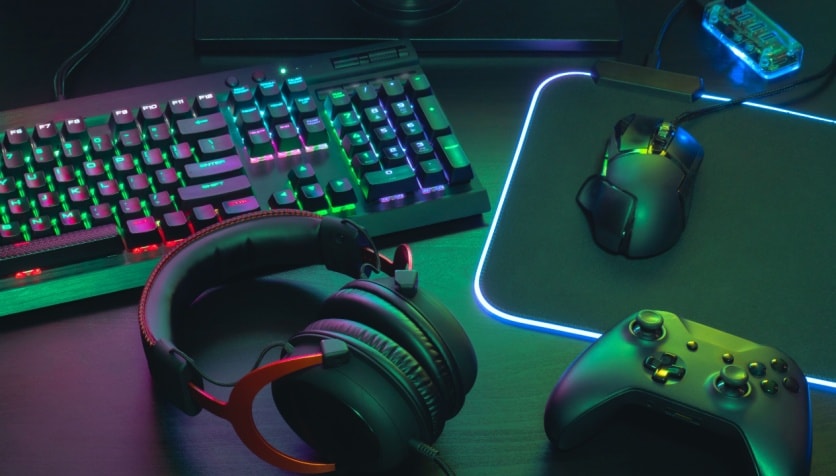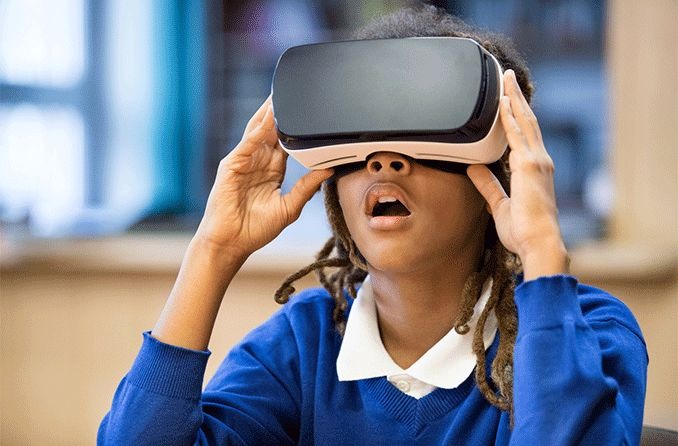Gaming glasses will reduce digital eye strain for many people.
Because let’s be honest, it’s harder to enjoy 4K monitors, vaporwave lighting and a graphics card you spent way too much on when your eyes aren’t happy.
Digital eye strain, also called computer vision syndrome, can happen when you overuse a monitor, TV or smartphone. It ranges from minor annoyance to something that interferes with your life on a daily basis.
Gamer glasses may be one piece of your eye strain puzzle.
What are gaming glasses, and what do they do?
Bright light blasting from artificial screens isn’t exactly natural, nor is staring into them for hours on end, so your eyes strain to keep up.
More often than not, this eye strain manifests in the form of blurry vision, headaches and/or dry eyes. Some people even experience ocular migraines — intense headaches that can cause temporary vision loss in one eye.
Anti-reflective coating
These specialized glasses typically reduce reflections and glare from your screen. Even the eyeglass lenses themselves, without this coating, can reflect light back into your eyes.
Lenses with anti-reflective (AR) coating deflect distracting reflections from both the front and back sides of each lens. Less glare can result in easier eye focusing, improved color contrast and quicker reaction times.
Blue light protection
You’ve probably heard about blue light. Electronic blue light resembles daytime sunlight, only much less intense. Gaming glasses usually have some level of blue light filtering. This tinted coating is what gives products like Gunnar glasses their signature amber tint. There are even blue light glasses for kids. Many people report more relaxed eyes when glare from the blue range of the visible light spectrum is reduced.
Clear, untinted gamer glasses do exist, but they may be less effective. Generally speaking, the clearer the lens, the less blue light it filters. Most clear blue-light lenses filter around 10-20% of blue-violet light, whereas yellow- or amber-tinted lenses can block up to 65-75% of overall blue light.
Slight magnification
To further reduce squinting and eye strain, there might be a slight magnification power built into your gamer glasses. Think of this as a full-time “zoom-in” button.
More than likely, you’ll hardly notice this magnification. The effect is only temporary, so it won’t affect your vision when you aren’t wearing glasses.
Well-known brands like Gunnar often include a small degree of magnifying power in their glasses. Computer glasses, which are sometimes interchangeable with gaming glasses, also offer magnification.
SEE RELATED: Are computer glasses worth it?
Can you get prescription gamer glasses?
Most gaming glasses aren’t designed to be worn on top of your prescription eyeglasses. But you still have options:
- Order gaming glasses with prescription lenses. Make sure the frames are optical grade so they can accommodate lenses of varying thickness.
- They’re a little harder to come by, but there are gaming glasses you can wear over your everyday glasses. The frames are extra wide to avoid any scratching.
- Consider clip-on gaming glasses. They’re easy to store and light to wear.
- Order daily glasses with anti-reflective and/or blue-light coatings. This mini-hack somewhat mimics the effects of gaming glasses and reduces strain outside of gaming as well. Keep in mind that the blue-light filter on daily glasses tends to be clear, hovering around 10-20% filtering.
- Look for industrial-grade blue-light goggles that fit over your frames. They’re usually meant for factory or laboratory settings, but they can work for everyday use too. They’re completely orange since they block almost 100% of blue light. Added bonus: They’re super cheap at around $10.
Remember, to get prescription gaming glasses, you’ll need to schedule an eye exam with an optometrist — unless you’ve already had one in the past year.
With or without specialized glasses, an up-to-date eye prescription is one of the easiest ways to minimize digital eye strain — and the key to 20/20 vision.
Results may vary
Some people wouldn’t dare spend long hours gaming without gaming glasses — but there are some who don’t see much of a benefit. Your personal experience depends on your eyes, screen usage and screen habits.
Eye strain is more likely to happen when we’re looking at screens for long, uninterrupted periods of time. Video games are all but guaranteed to fit into that category.
Practicing the 20-20-20 rule provides your eyes with a much-needed break a few times an hour. For every 20 minutes you spend looking at a screen, take 20 seconds to focus on an object at least 20 feet away.
Give it a try — it’s free!
READ NEXT: Can video games cause health problems?
